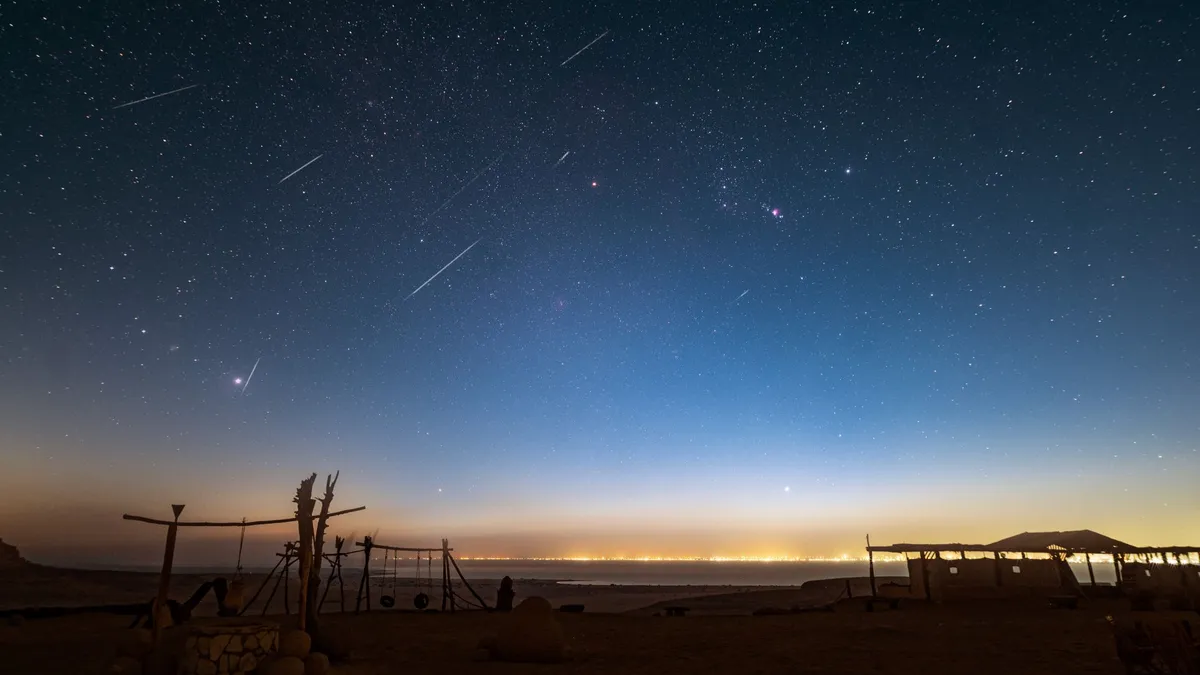
The Orionid meteor shower reached its peak on the nights of October 21-23, 2023, captivating stargazers with an awe-inspiring display of natural fireworks. This mesmerizing phenomenon occurs as debris from Halley's Comet enters Earth’s atmosphere, resulting in brilliant shooting stars that streak across the night sky. For those lucky enough to witness this celestial event, it was truly a sight to behold.
Among the fortunate observers was photographer Osama Fathi, who captured an extraordinary view of the Orionid meteors. On October 19, just before the peak, Fathi documented these fiery trails over Lake Qarun in Egypt. He shared that this composite image was crafted from several meteor frames taken over three hours from Qatrani, located near the northern edge of the lake. Out of more than 200 photos taken during this session, only a select few bright meteors aligned beautifully near the constellation Orion, which is visible on the center right of his stunning frame.
Using a Nikon Z6 camera equipped with a 14-24 mm Nikkor lens, Fathi's composite skyscape combined a three-minute exposure of the night sky with multiple 10-second shots of the meteors. This technique allowed him to capture the essence of the meteor shower in a single breathtaking image.
The peak of the 2023 Orionid meteor shower coincided with the new moon phase in October, offering stargazers a remarkably dark night sky. This absence of moonlight made it easier to spot even the faintest shooting stars illuminating the starfield above. For those who experienced cloudy conditions during the peak viewing nights, there's no need for disappointment. According to Robert Lunsford of the American Meteor Society, the meteor shower will continue to provide opportunities for viewing in the following days.
Lunsford noted that meteor rates will decline gradually after the peak. Stargazers can still expect to see over 10 meteors per hour during the mornings of October 24-26, particularly when observing from rural areas with minimal light pollution. By this time, the radiant point of the meteors will have shifted eastward into western Gemini, so observers may notice these shooting stars originating from that constellation rather than Orion.
For those interested in capturing their own breathtaking images of shooting stars, it’s recommended to consult our comprehensive guide to imaging meteor showers. Additionally, our curated lists of the top cameras and lenses for astrophotography can help photographers make the most of their night sky adventures.
In conclusion, the Orionid meteor shower is one of the most captivating astronomical events, and this year's display did not disappoint. Whether you witnessed it in person or plan to capture the beauty of the night sky in the days ahead, the Orionids offer a reminder of the wonders of our universe.